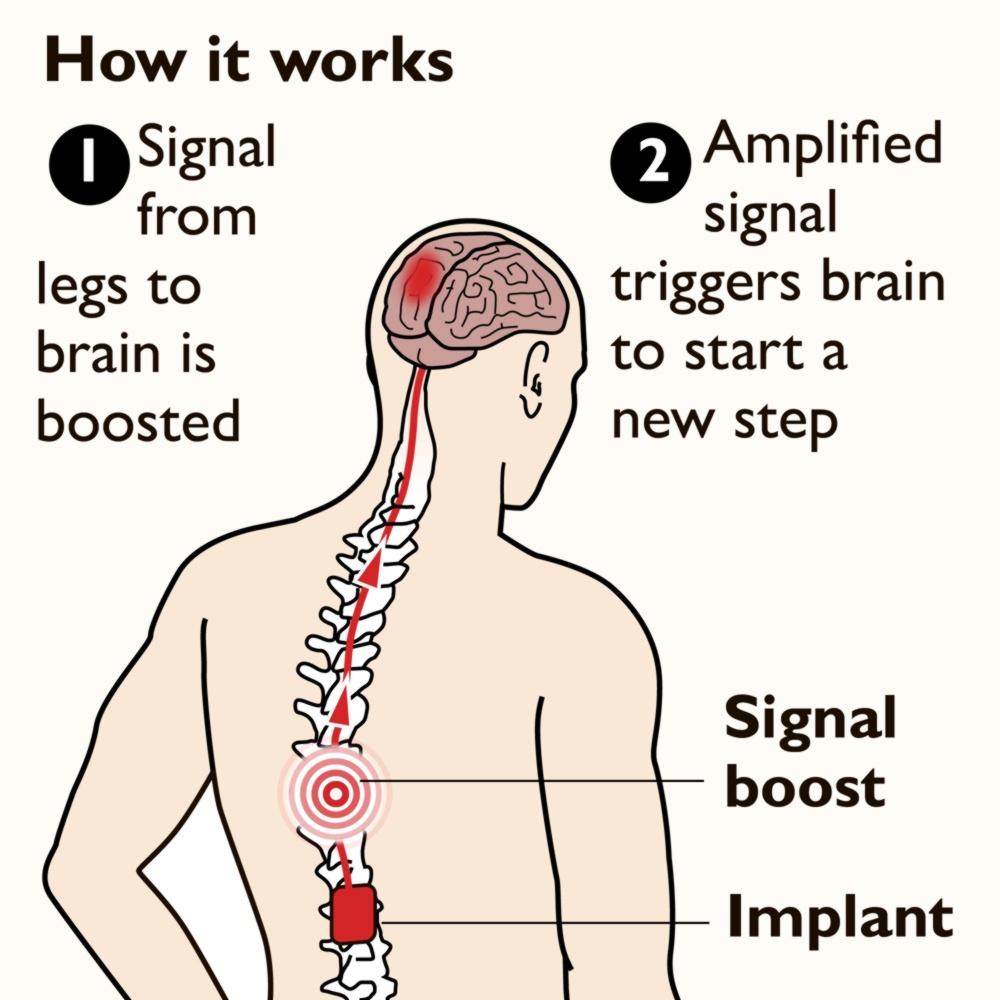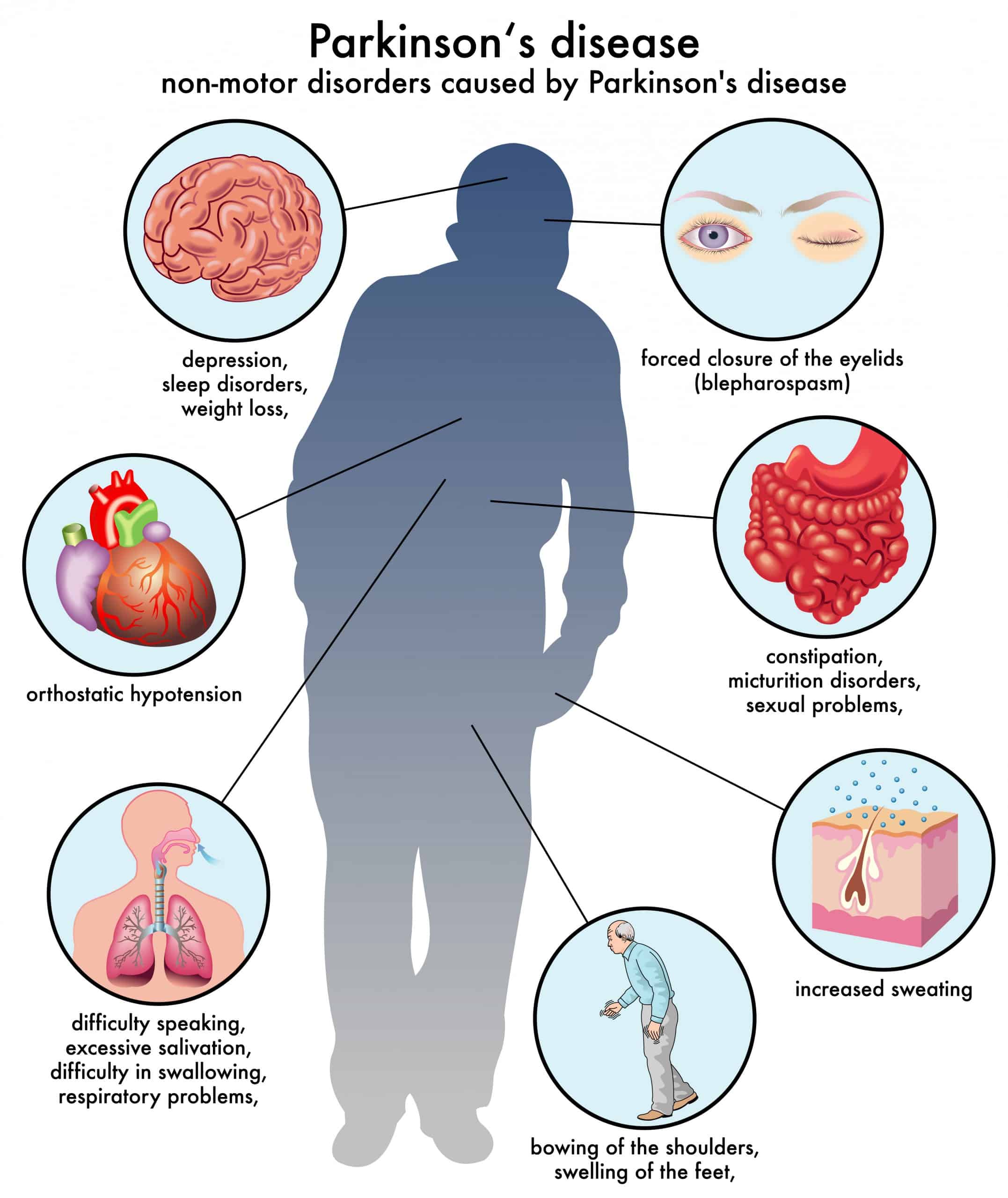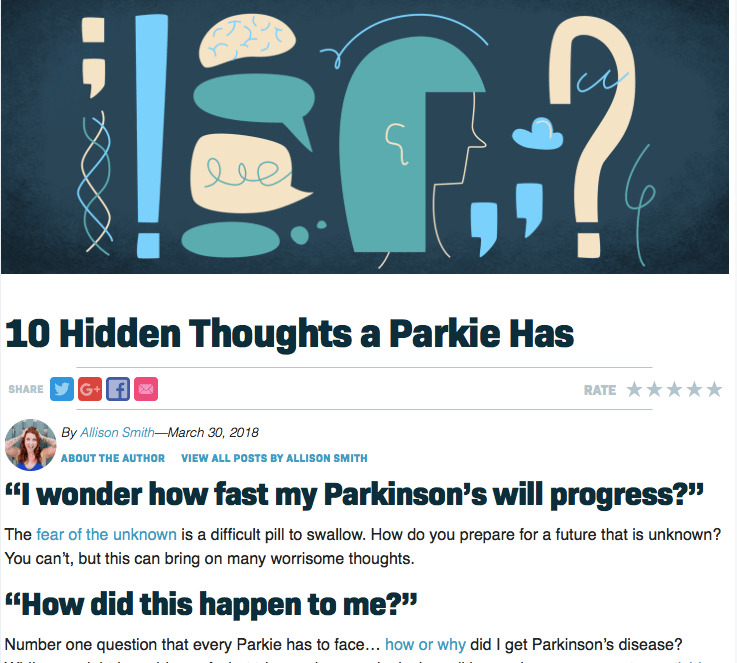Are There Places Where Parkinsons Is More Or Less Common
In general, research suggests that the prevalence of Parkinsons is higher in Europe and the United States than in Asian, Latin American and African countries.
These differences may be largely explained by differences in the age-profile. If the population has more younger people and a lower life expectancy then its likely to have a lower number of people with Parkinsons. And in developing nations this may be compounded if they have less developed healthcare systems as Parkinsons is much less likely to be diagnosed or researched.
Although, there have been some reports of specific areas where Parkinsons is more or less common than expected, its usually difficult to prove these hotspots are not simply due to chance, or to see the same patterns in other similar areas.
What Is The Prevalence
It is important to understand the difference between incidence and prevalence. Incidence is the number of new cases of a disease that are diagnosed in a time period. Usually, incidence is the number of new cases per year.3
Prevalence is the number of cases of a disease that exist at any point in time. This number is larger because it includes new cases and all the existing cases of a disease.3
In 2014, the Parkinsons Foundation started a project to get a better measurement of PD prevalence. Currently, there are an estimated 1 million people in the United States living with PD. About 60,000 people in the United States are diagnosed each year with PD in the United States. Experts estimate there will be 1.2 million people in the United States living with PD by 2030.1,3
What Are The Symptoms Of Parkinson Disease
Parkinson disease symptoms usually start out mild, and then progressively get much worse. The first signs are often so subtle that many people don’t seek medical attention at first. These are common symptoms of Parkinson disease:
- Tremors that affect the face and jaw, legs, arms, and hands
- Slow, stiff walking
Recommended Reading: All The Symptoms Of Parkinson’s Disease
What Causes Parkinsons Disease
Parkinsons disease occurs when nerve cells, or neurons, in an area of the brain that controls movement become impaired and/or die. Normally, these neurons produce an important brain chemical known as dopamine. When the neurons die or become impaired, they produce less dopamine, which causes the movement problems of Parkinsons. Scientists still do not know what causes cells that produce dopamine to die.
People with Parkinsons also lose the nerve endings that produce norepinephrine, the main chemical messenger of the sympathetic nervous system, which controls many functions of the body, such as heart rate and blood pressure. The loss of norepinephrine might help explain some of the non-movement features of Parkinsons, such as fatigue, irregular blood pressure, decreased movement of food through the digestive tract, and sudden drop in blood pressure when a person stands up from a sitting or lying-down position.
Many brain cells of people with Parkinsons contain Lewy bodies, unusual clumps of the protein alpha-synuclein. Scientists are trying to better understand the normal and abnormal functions of alpha-synuclein and its relationship to genetic mutations that impact Parkinsons disease and Lewy body dementia.
Pd Is Different For Everyone

It is important to note that PD is different for everyone. Though it is a progressive disorder, not every case of PD progresses the same. Some may progress faster or slower than others.
Different people also experience different symptoms. One person may experience only tremor and stiffness. Another may have difficulty with balance, mood changes, and slowness of movement or gradual loss of spontaneous movement .4
It is difficult to predict how PD may affect someone and how symptoms may progress or change over time.4
If you have more questions about PD or would like to understand if you are at risk for developing PD, talk to your doctor.
Recommended Reading: What Kind Of Doctor Treats Parkinson’s Disease
Bryans Early Onset Parkinsons Diagnosis
Bryan is a 35-year-old nurse, rock climber, husband, and new father to a four-month-old baby boy. He is also someone who is living with YOPD. YOPD is defined as Parkinsons that is diagnosed before the age of 50 and includes about 10% of people living with PD. Younger people will experience the disease differently than those who are diagnosed older, in part due to their different life circumstances. Employment, new relationships, and parenthood add particular challenges that those who are diagnosed older may not have to navigate. When and how to disclose the diagnosis is also of particular concern.
How Is Parkinsons Disease Dementia Diagnosed
No single test can diagnose Parkinsons disease dementia. Instead, doctors rely on a series or combination of tests and indicators.
Your neurologist will likely diagnose you with Parkinsons and then track your progression. They may monitor you for signs of dementia. As you get older, your risk for Parkinsons dementia increases.
Your doctor is more likely to conduct regular testing to monitor your cognitive functions, memory recall, and mental health.
Recommended Reading: List Of Parkinson’s Symptoms
Lewy Body Dementia Vs Parkinsons Disease Dementia
Diagnoses of Lewy body dementia include dementia with Lewy bodies and Parkinsons disease dementia. Symptoms in both of these diagnoses can be similar.
Lewy body dementia is a progressive dementia caused by abnormal deposits of a protein called alpha-synuclein in the brain. Lewy bodies are also seen in Parkinsons disease.
The overlap in symptoms between Lewy body dementia and Parkinsons disease dementia include movement symptoms, rigid muscles, and problems with thinking and reasoning.
This seems to indicate that they could be linked to the same abnormalities, though more research is needed to confirm that.
The later stages of Parkinsons disease have more severe symptoms that may require help moving around, around-the-clock care, or a wheelchair. Quality of life can decline rapidly.
Risks of infection, incontinence, pneumonia, falls, insomnia, and choking increase.
Hospice care, memory care, home health aides, social workers, and support counselors can be a help in later stages.
Parkinsons disease itself isnt fatal, but complications can be.
Research has shown a median survival rate of about
Writing And Talking About Parkinson’s
Based on feedback from the Parkinson’s community, here are the preferred words and terms for talking about Parkinson’s, and the ones to avoid. If you’re unsure about any of this, please get in touch with our Media and PR team:
- When describing people with, affected by, or living with Parkinson’s, use ‘people living with Parkinson’s’.
- Avoid saying ‘suffering’, ‘surviving’, ‘battling’. Also avoid ‘victims’ or ‘sufferers’.
Parkinson’s, symptoms and medication:
- When talking about Parkinson’s, always refer to it as simply ‘Parkinson’s’ or a/the ‘condition’.
- Avoid saying ‘Parkinson’s disease’.
Also Check: What Are The Early Symptoms For Parkinson Disease
How Were These Figures Calculated
We analysed anonymous medical records of over 2.5 million individuals over the age of 20 registered with GPs in the UK from the Clinical Practice Research Datalink database.
Clinical experts helped us assess the records to work out how many patients had a definite diagnosis of Parkinsons and then we adjusted the numbers to make sure they matched the UK population in terms of age profile and gender.
Finally, we used projected population figures from the Office of National Statistics, to estimate how many people have Parkinsons in 2018 and how many will go on to be diagnosed in 2025 and beyond.
The UK population is growing and people are living longer, which means that the number of people of people living with Parkinsons is expected to rise.
For more information, you can
Dont Miss: Boxing And Parkinsons Disease
Signs Of Parkinsons Disease
In 1817, Dr. James Parkinson published An Essay on the Shaking Palsy describing non-motor, as well as, motor symptoms of the illness that bears his name. Parkinsons is not just a movement disorder, explained Dr. Shprecher. Constipation, impaired sense of smell, and dream enactment can occur years before motor symptoms of Parkinsons. The latter, caused by a condition called REM sleep behavior disorder, is a very strong risk factor for both Parkinsons and dementia . This has prompted us to join a consortium of centers studying REM sleep behavior disorder.
Dont Miss: How Do They Test You For Parkinsons Disease
Recommended Reading: Deep Brain Surgery For Parkinson’s
Medications For People With Parkinsons Disease
Symptoms of Parkinsons disease result from the progressive degeneration of nerve cells in the brain and other organs such as the gut, which produce a neurotransmitter called dopamine. This causes a deficiency in the availability of dopamine, which is necessary for smooth and controlled movements. Medication therapy focuses on maximising the availability of dopamine in the brain. Medication regimes are individually tailored to your specific need. Parkinsons medications fit into one of the following broad categories:
- levodopa dopamine replacement therapy
- dopamine agonists mimic the action of dopamine
- COMT inhibitors used along with levodopa. This medication blocks an enzyme known as COMT to prevent levodopa breaking down in the intestine, allowing more of it to reach the brain
- anticholinergics block the effect of another brain chemical to rebalance its levels with dopamine
- amantadine has anticholinergic properties and improves dopamine transmission
- MAO type B inhibitors prevent the metabolism of dopamine within the brain.
What Sets Young Onset Parkinsons Apart From A Diagnosis At An Older Age

Because the majority of people who get Parkinsons disease are over the age of 60, the disease is often overlooked in younger people, leading many to go undiagnosed or misdiagnosed for extended periods of time.
However, once it has been diagnosed, the rate of the diseases progression is usually much slower in younger than older people, due in part to the fact that younger people have fewer general health problems and are more capable during physical therapy treatment.
Symptoms of young onset Parkinsons disease
While common symptoms of Parkinsons may be similar no matter what age you are, the progression is often different:
- Young people often have more involuntary movement problems due to the most commonly prescribed Parkinsons disease medication, levodopa. For this reason, young onset patients are usually initially treated with alternatives to levodopa.
- Other problems associated with Parkinsons such as memory loss, confusion, and balance difficulties tend to be less frequent in young people with the disease.
Also Check: Drugs To Treat Parkinson’s
Whats Different About Young
The age of diagnosis matters for a variety of reasons, from probable causes of early cases to symptoms and treatment:
- Genetics. As with any case of Parkinsons disease, the exact cause is usually unknown. That said, The young-onset cases of Parkinsons disease are, on average, a bit more likely to be familial or genetic, says Gregory Pontone, M.D., director of the Johns Hopkins Movement Disorders Psychiatry Clinic.
- Symptoms. In many patients with YOPD, dystonia is an early symptom. People with YOPD also report more dyskinesia . They also tend to exhibit cognitive problems, such as dementia and memory issues, less frequently.
- Progression. Patients with young-onset Parkinsons appear to have a slower progression of the disease over time, says Pontone. They tend to have a milder course, staying functional and cognitively intact for much longer.
- Treatment. Most patients with Parkinsons take the medication levodopa. However, other drugs, such as MAO-B inhibitors, anticholinergics, amantadine, and dopamine receptor agonists, may be used before levodopa.
Estimation Of The 2020 Global Population Of Parkinsons Disease
N. Maserejian, L. Vinikoor-Imler, A. Dilley
Category:Epidemiology
Objective: To estimate the number of individuals living with PD globally in 2020.
Background: Although previous studies have estimated PD prevalence in many countries, the number of individuals with PD globally in 2020 has not been estimated.
Method: We comprehensively reviewed the literature for recent and reliable prevalence estimates of PD globally. The Global Burden of Disease Study was the only source available that provided an overall global estimate, with 2017 the most recent year available from the published manuscript or online tools . We verified the estimates of the PD prevalence of several countries that comprised the GBD summary estimate, by reviewing the individual publications and comparing them to the GBD estimates. GBD estimates tended to be in the lower range but close to estimates from the individual papers. For all but two countries , we applied the GBD prevalence proportions in 2017. For the US and Canada, we applied more recent prevalence proportions by Marras et al. 2018 . We assessed the worldwide PD population in 2020 by multiplying the most reliable prevalence proportions by the corresponding 2020 population, using CDC data for US, Statistics Canada for Canada, Eurostat for European countries and UN population estimates for the rest of the world.
To cite this abstract in AMA style:
Mov Disord.
Read Also: Earliest Symptoms Of Parkinson’s Disease
What Is Parkinson’s Disease
Parkinsons disease occurs when brain cells that make dopamine, a chemical that coordinates movement, stop working or die. Because PD can cause tremor, slowness, stiffness, and walking and balance problems, it is called a movement disorder. But constipation, depression, memory problems and other non-movement symptoms also can be part of Parkinsons. PD is a lifelong and progressive disease, which means that symptoms slowly worsen over time.
The experience of living with Parkinson’s over the course of a lifetime is unique to each person. As symptoms and progression vary from person to person, neither you nor your doctor can predict which symptoms you will get, when you will get them or how severe they will be. Even though broad paths of similarity are observed among individuals with PD as the disease progresses, there is no guarantee you will experience what you see in others.
Estimates suggest that Parkinsons affects nearly 1 million people in the United States and more than 6 million people worldwide.
For an in-depth guide to navigating Parkinsons disease and living well as the disease progresses, check out our Parkinsons 360 toolkit.
What Is Parkinson’s Disease?
Dr. Rachel Dolhun, a movement disorder specialist and vice president of medical communications at The Michael J. Fox Foundation, breaks down the basics of Parkinson’s.
Genetic And Environmental Interactions
Although several genetic mutations have been identified to be associated with a higher risk of developing Parkinson’s disease most people do not have these genetic variations.
On the other hand, even though pesticides and head traumas are associated with PD, most people do not have any obvious exposure to these environmental factors.
Parkinson’s is caused by a combination of genes, environmental and lifestyle influences. The interaction of all three components determines if someone will develop Parkinson’s. Parkinsons-specific research is critical to better understanding how these components interact to cause PD and how to prevent it.
Page reviewed by Dr. Lauren Fanty, Movement Disorders Fellow at the University of Florida, a Parkinsons Foundation Center of Excellence.
Don’t Miss: What Are Off Periods In Parkinson’s
Causes Of Parkinsons Disease
At present, we do not know the cause of Parkinsons disease. In most people there is no family history of Parkinsons Researchers worldwide are investigating possible causes, including:
- environmental triggers, pesticides, toxins, chemicals
- genetic factors
- combinations of environment and genetic factors
Also Check: Best Treatment For Parkinsons
What Makes Pd Hard To Predict
Parkinsonâs comes with two main buckets of possible symptoms. One affects your ability to move and leads to motor issues like tremors and rigid muscles. The other bucket has non-motor symptoms, like pain, loss of smell, and dementia.
You may not get all the symptoms. And you canât predict how bad theyâll be, or how fast theyâll get worse. One person may have slight tremors but severe dementia. Another might have major tremors but no issues with thinking or memory. And someone else may have severe symptoms all around.
On top of that, the drugs that treat Parkinsonâs work better for some people than others. All that adds up to a disease thatâs very hard to predict.
You May Like: How Does General Anesthesia Affect Parkinsons
Don’t Miss: Parkinson’s And High Blood Pressure
Behaviors Seen In Parkinsons Disease Dementia
As dementia progresses, managing disorientation, confusion, agitation, and impulsivity can be a key component of care.
Some patients experience hallucinations or delusions as a complication of Parkinsons disease. These may be frightening and debilitating. Approximately 50 percent of those with the disease may experience them.
The best thing to do when giving care to someone experiencing hallucinations or delusions from Parkinsons disease dementia is to keep them calm and reduce their stress.
Take note of their symptoms and what they were doing before they exhibited signs of hallucinating and then let their doctor know.
This element of the disease can be particularly challenging for caregivers. Patients may become unable to care for themselves or be left alone.
Some ways to make caregiving easier include:
- sticking to a normal routine whenever possible
- being extra comforting after any medical procedures
- limiting distractions
- using curtains, nightlights, and clocks to help stick to a regular sleep schedule
- remembering that the behaviors are a factor of the disease and not the person
Highlights From The Canadian Chronic Disease Surveillance System

Parkinsonism, including Parkinsons disease, can have significant impacts for those affected, their caregivers, and society. With a growing and aging population, it is estimated that the number of Canadians living with parkinsonism will double between 2011 and 2031 and that the incidence will increase by 50%.Footnote 1
The Public Health Agency of Canada , in collaboration with all Canadian provinces and territories, conducts national surveillance of parkinsonism to support the planning and evaluation of related policies, programs, and services. This fact sheet presents an overview of the data on diagnosed parkinsonism, including Parkinsons disease, from the Canadian Chronic Disease Surveillance System .
You May Like: What Causes Tremors Besides Parkinson’s